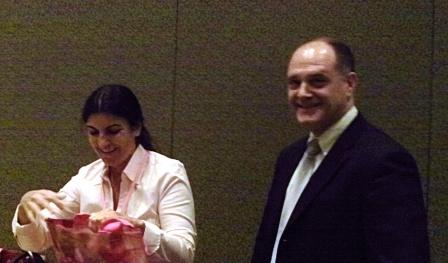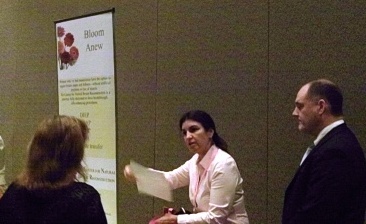 You’ve heard it for years: eat more fiber to stay regular—but you might not understand what that means. Fiber is the part of the grain, vegetable, or plant that we cannot digest. It passes through your system without breaking down and adds weight and bulk to your stools.
You’ve heard it for years: eat more fiber to stay regular—but you might not understand what that means. Fiber is the part of the grain, vegetable, or plant that we cannot digest. It passes through your system without breaking down and adds weight and bulk to your stools.
Eating more fiber decreases constipation, reduces straining because bulky stools are easier to pass, and helps you feel great. You’ll want to aim for a certain amount of fiber per day, so you’ll need to read ingredient labels or research fiber amounts online to see how much each food has. According to the Mayo Clinic, men under 50 need at least 38 grams per day, while men over 50 need 30. Women under 50 should have at least 25 grams, and those over 50 should have at least 21 grams.
Good sources of fiber include fruits, vegetables, whole grains, beans, nuts, and seeds. The more of these you eat, the more you’ll find what works best for you. It’s easy to work fiber into your diet; for example, you can eat high-fiber cereal or cook with high-fiber vegetables. You can also use over-the-counter fiber supplements such as Metamucil, though whole foods should be your first choice.
To stay regular, you might try some of the following ideas in addition to extra fiber. These ideas will also help after breast reconstruction surgery, as the procedure itself can be constipating.
Drink plenty of fluids.
Water helps keep your stools soft and easy to pass. Hot liquids, especially those with caffeine, stimulate colon action. You might try hot water with lemon juice first thing in the morning.
Don’t ignore the urge to go.
Many of us will simply hold off on using the bathroom if the urge hits at an inconvenient time. Always answer the call of nature. Regularly ignoring it can cause constipation or hard stools that are difficult to pass. Not going when the urge hits can also contribute to poor bowel action.
If you have a habit of ignoring urges, you may want to establish a certain time of day when you go to the bathroom.
Get more exercise.
Exercise helps you stay regular because the movement stimulates your body and helps your colon move waste. There’s a reason dogs tend to go during daily walks. Laughter has also been found to stimulate the colon, so if you’re having trouble, watch your favorite funny movie.
Know your medications and compensate.
Some medications can be constipating, so you may need to be extra vigilant about your fiber intake and add more water, prunes or stewed figs, or even a stool softener.
Take precautions when you travel.
Traveling tends to make you irregular, so be sure to stay well hydrated and eat plenty of fiber before and during your trip. The time difference may mean you’re using the bathroom at very odd times. Go with it and don’t ignore your body.
What’s your favorite tip for staying regular?











